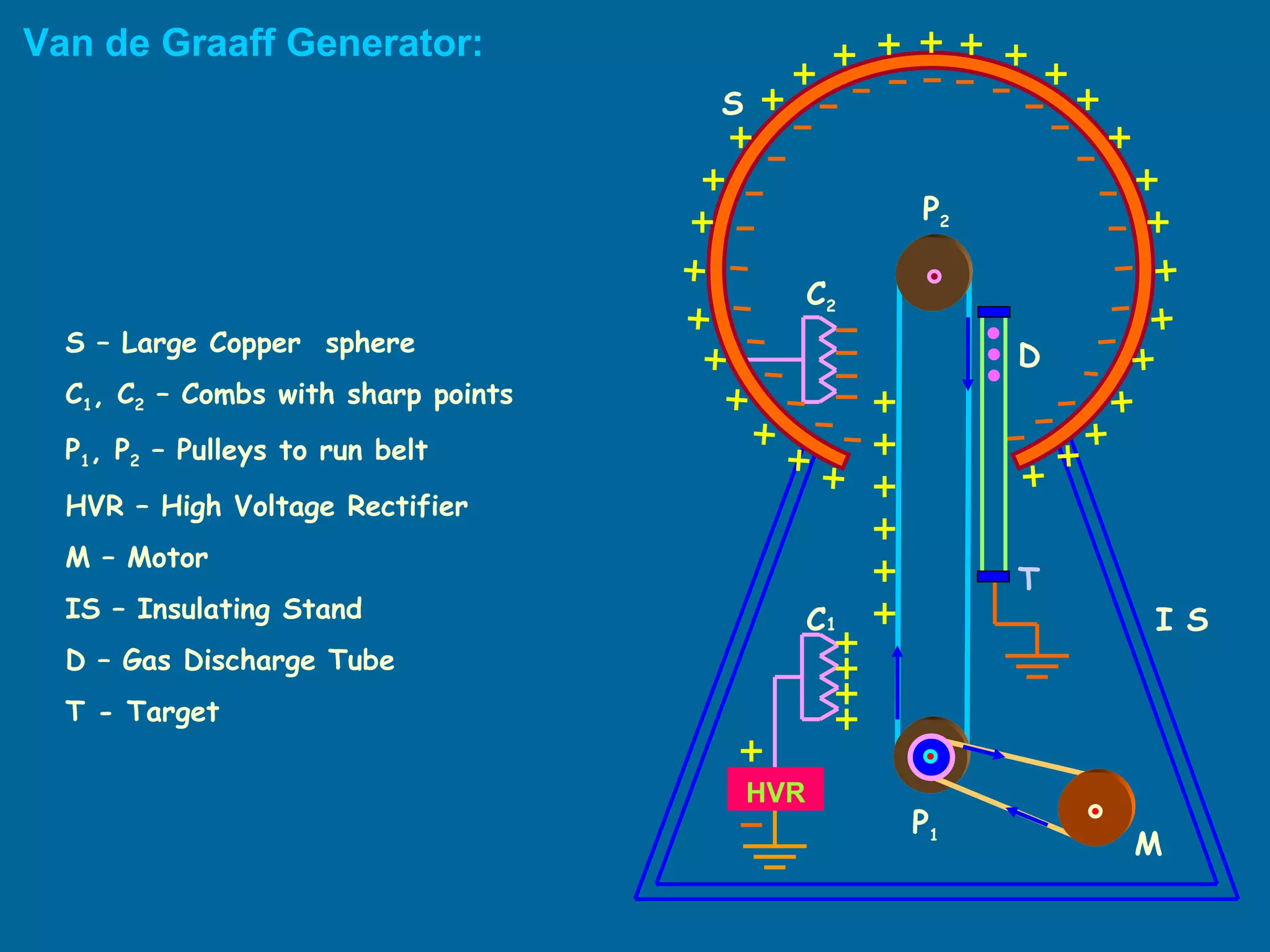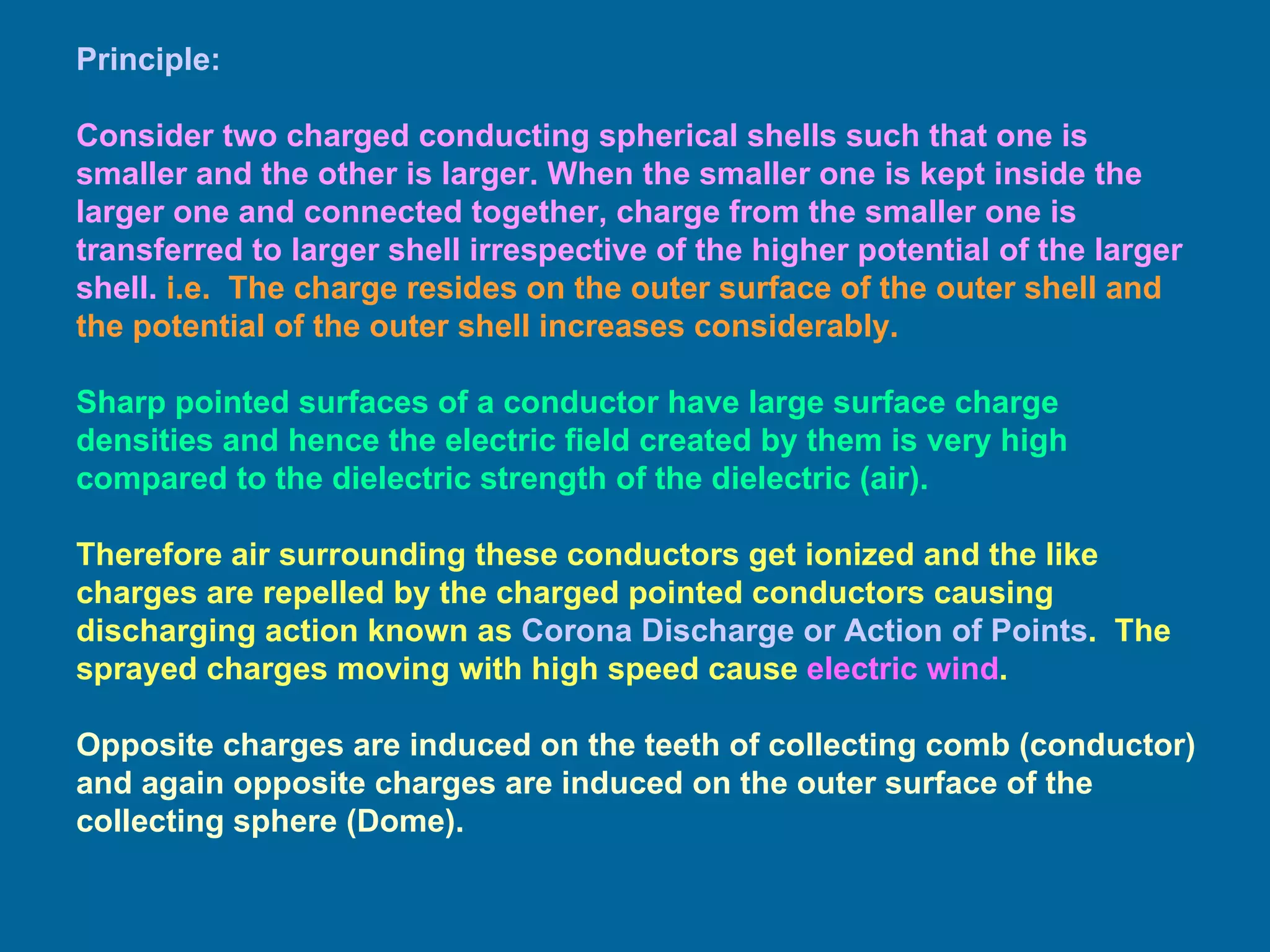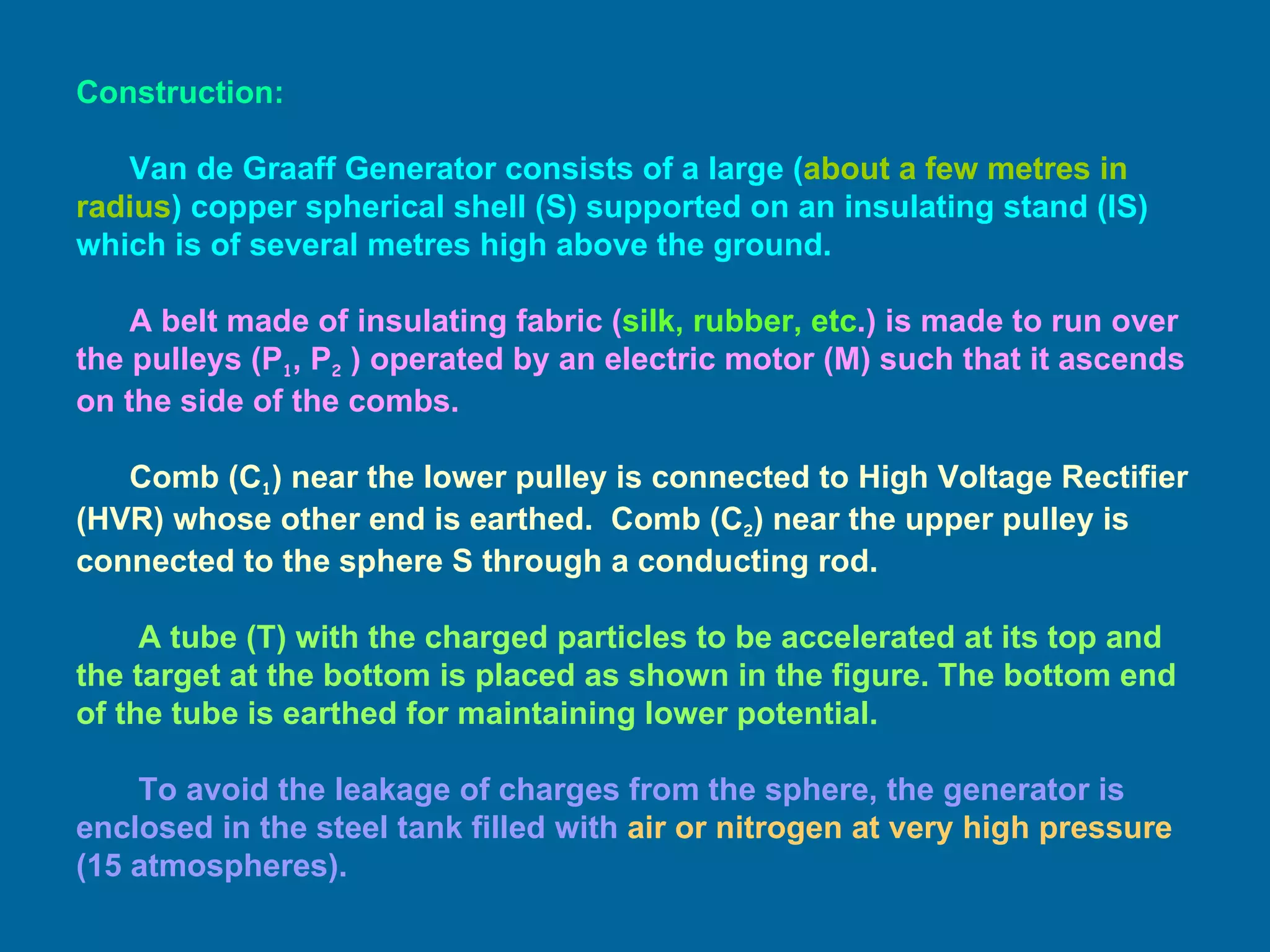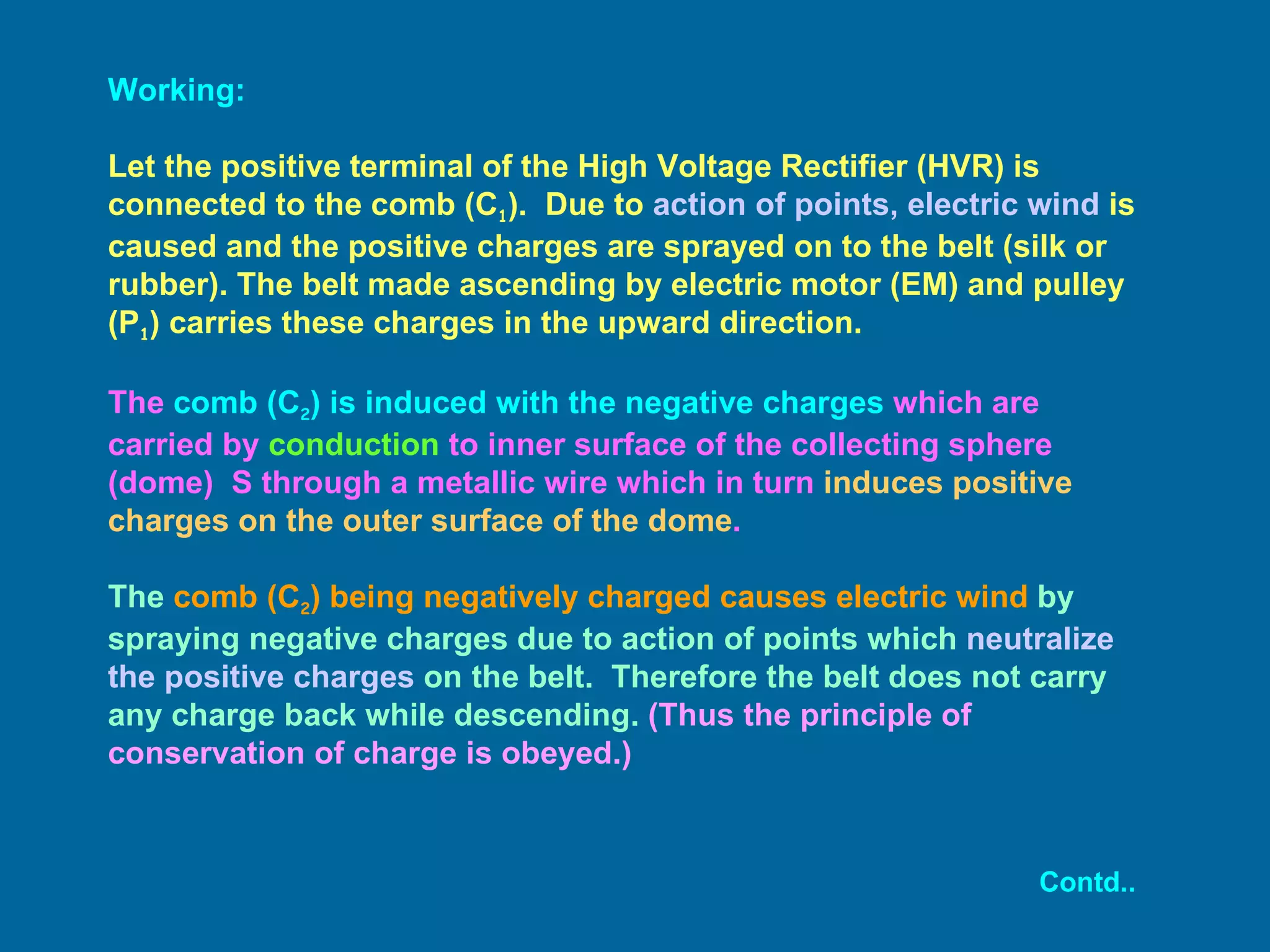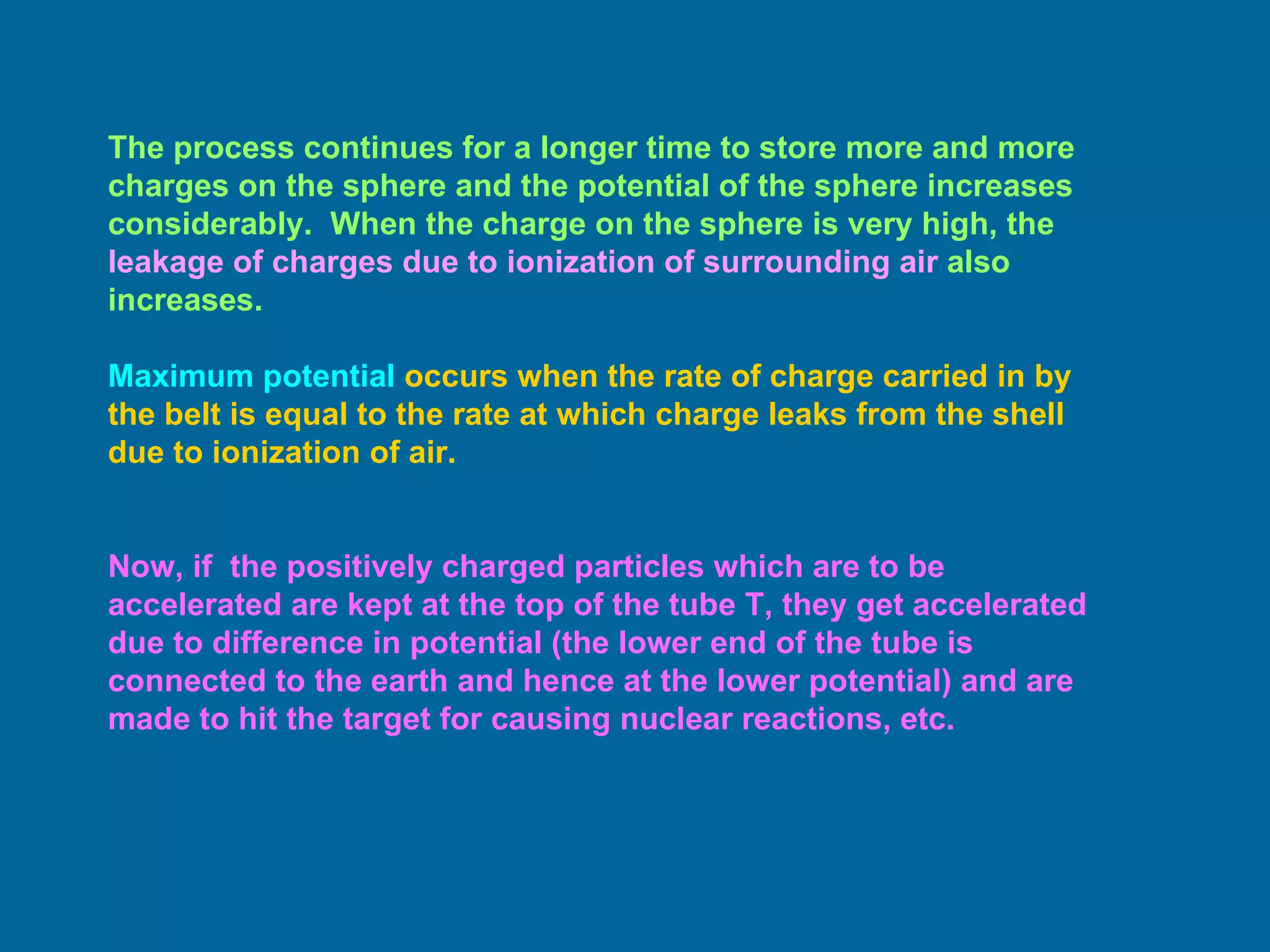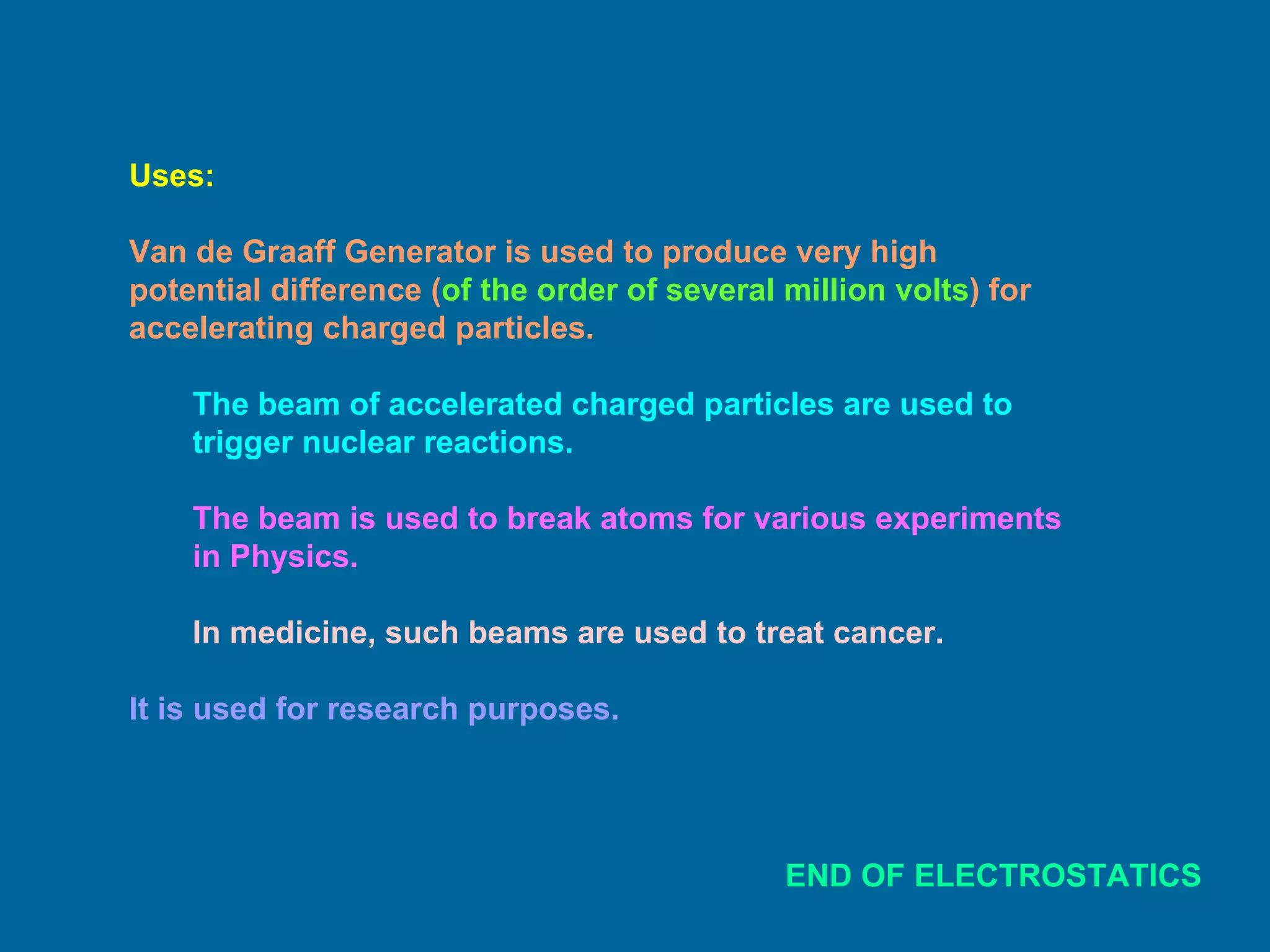1) The document discusses various concepts related to electrostatics including capacitance, capacitors, and dielectrics. It defines capacitance as the ability of a conductor to store charge and explains the factors that affect capacitance such as area and distance of separation for a parallel plate capacitor.
2) Energy storage in capacitors is also covered, explaining that work must be done to charge a capacitor and this work is stored as electrostatic potential energy. Expressions are given for calculating energy stored in series and parallel combinations of capacitors.
3) The document introduces the concept of dielectrics, noting that polar molecules can have their dipole moments aligned by an electric field to induce polarization while non-polar
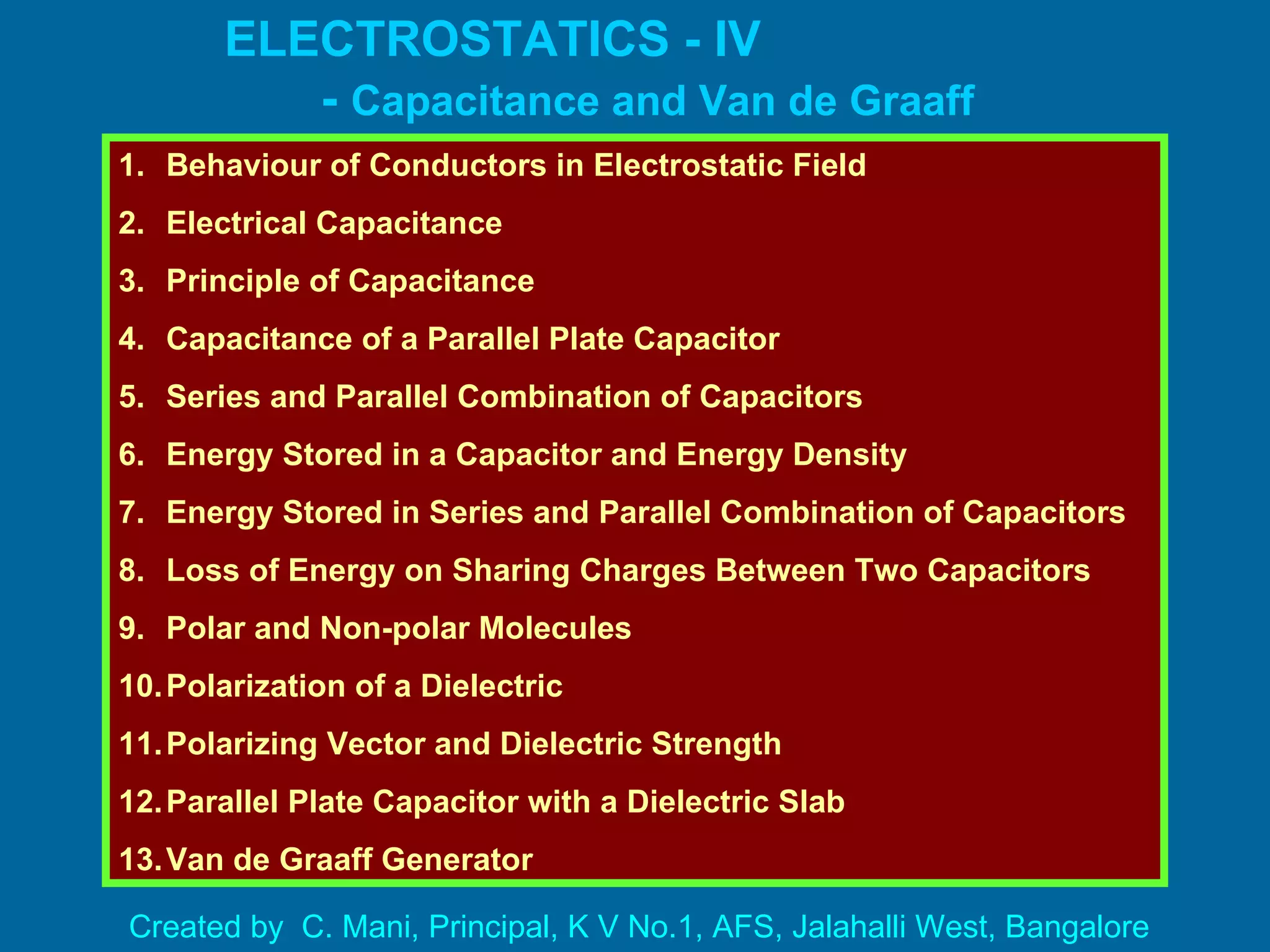
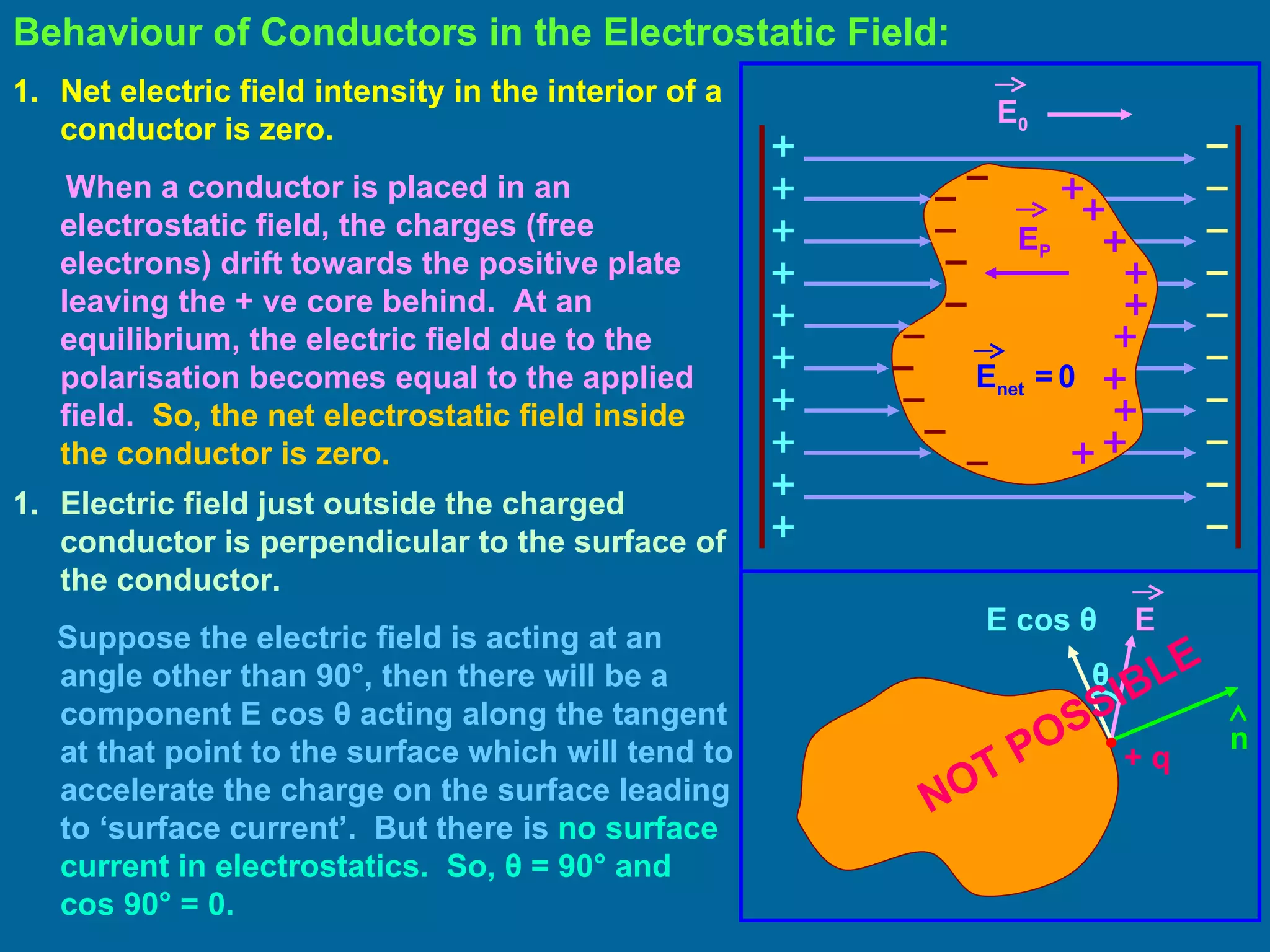
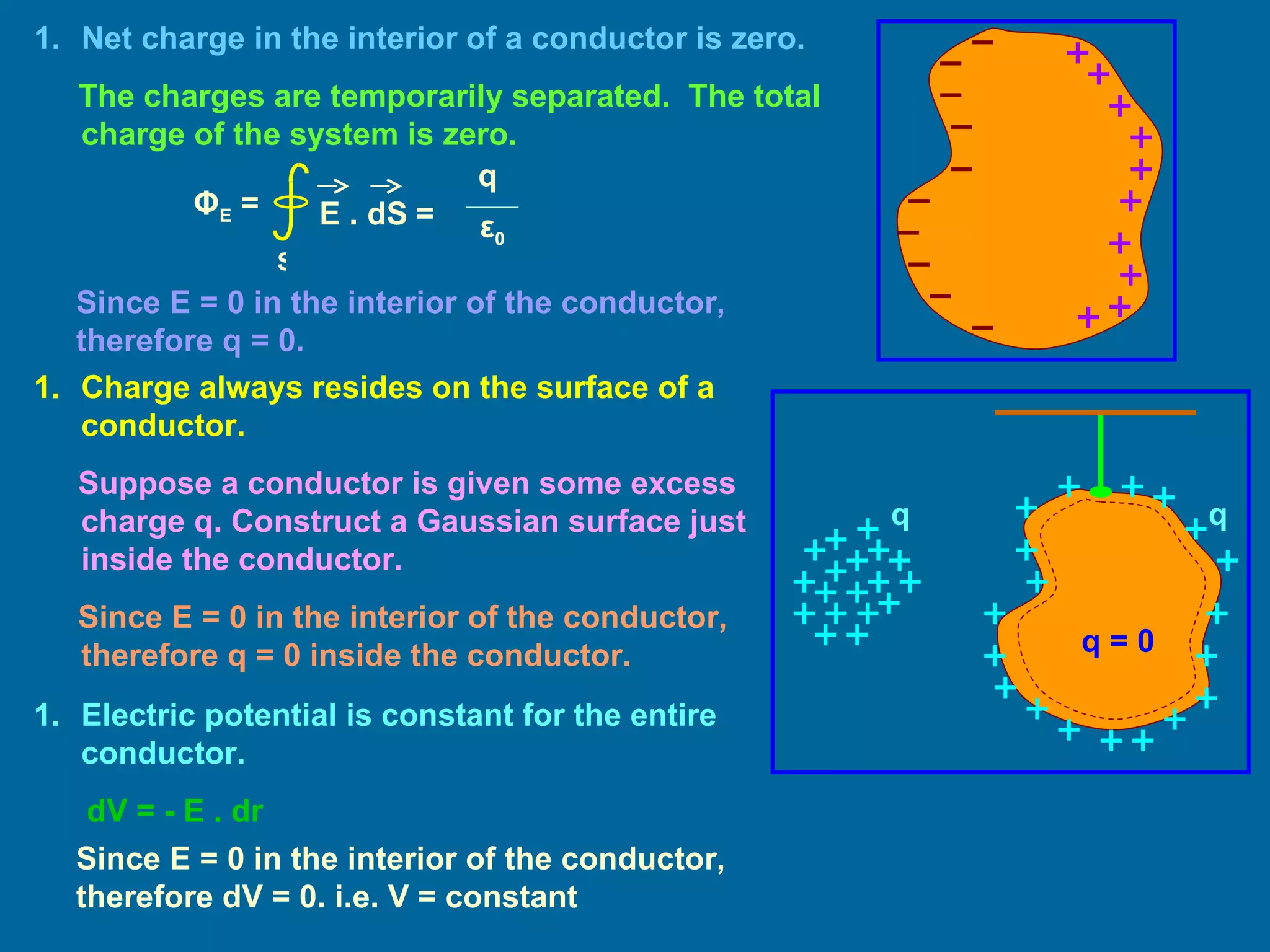

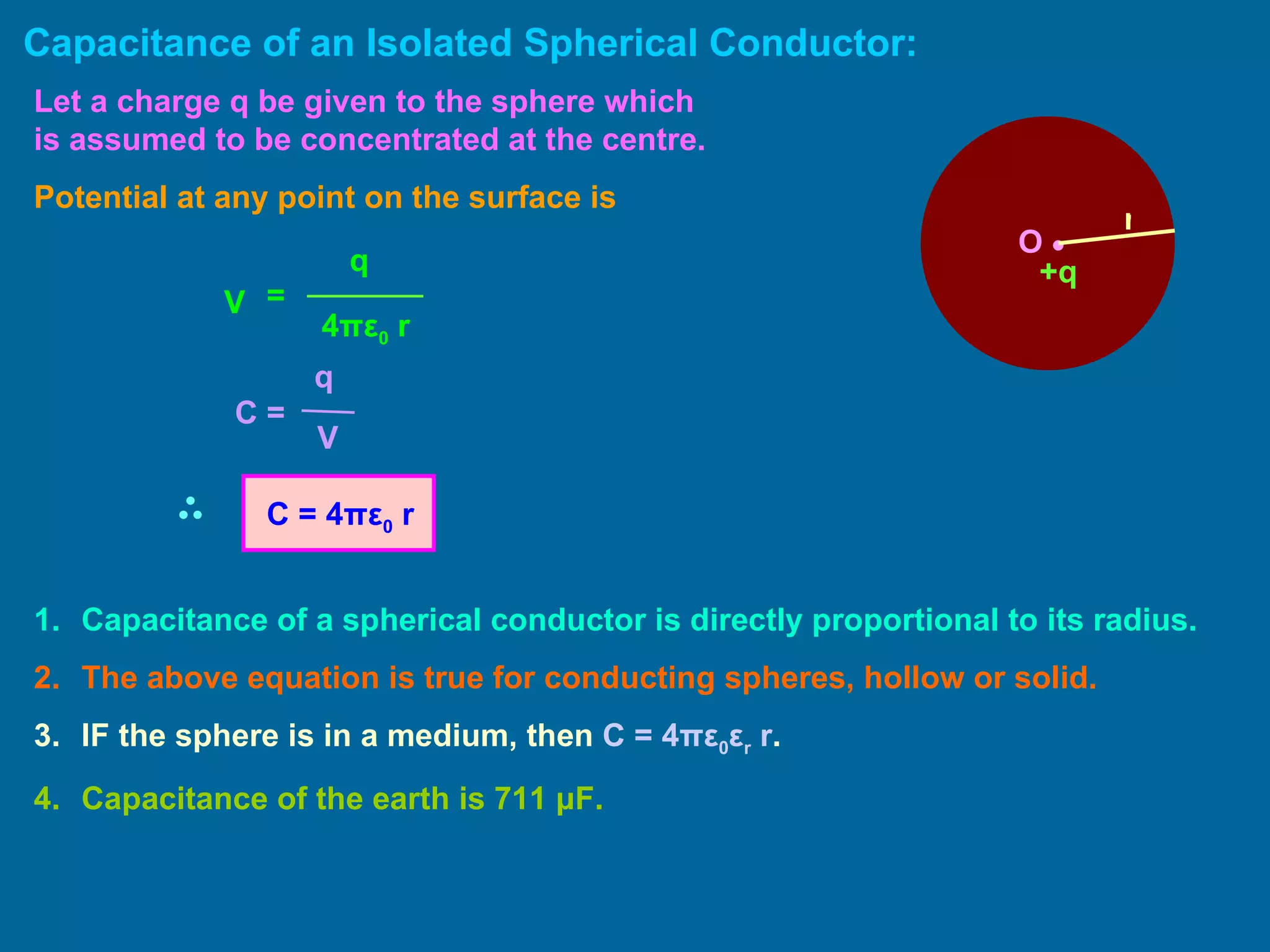
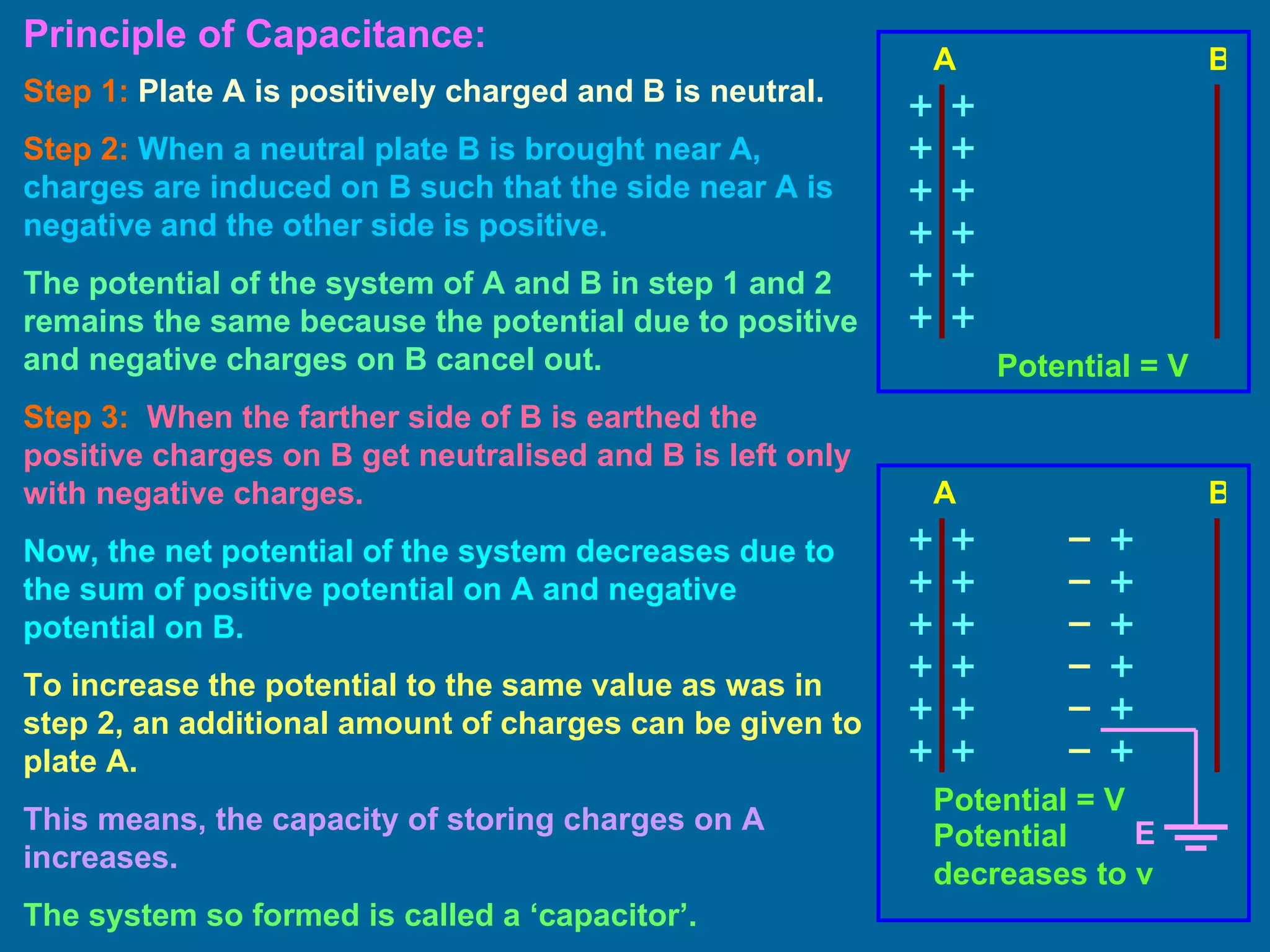
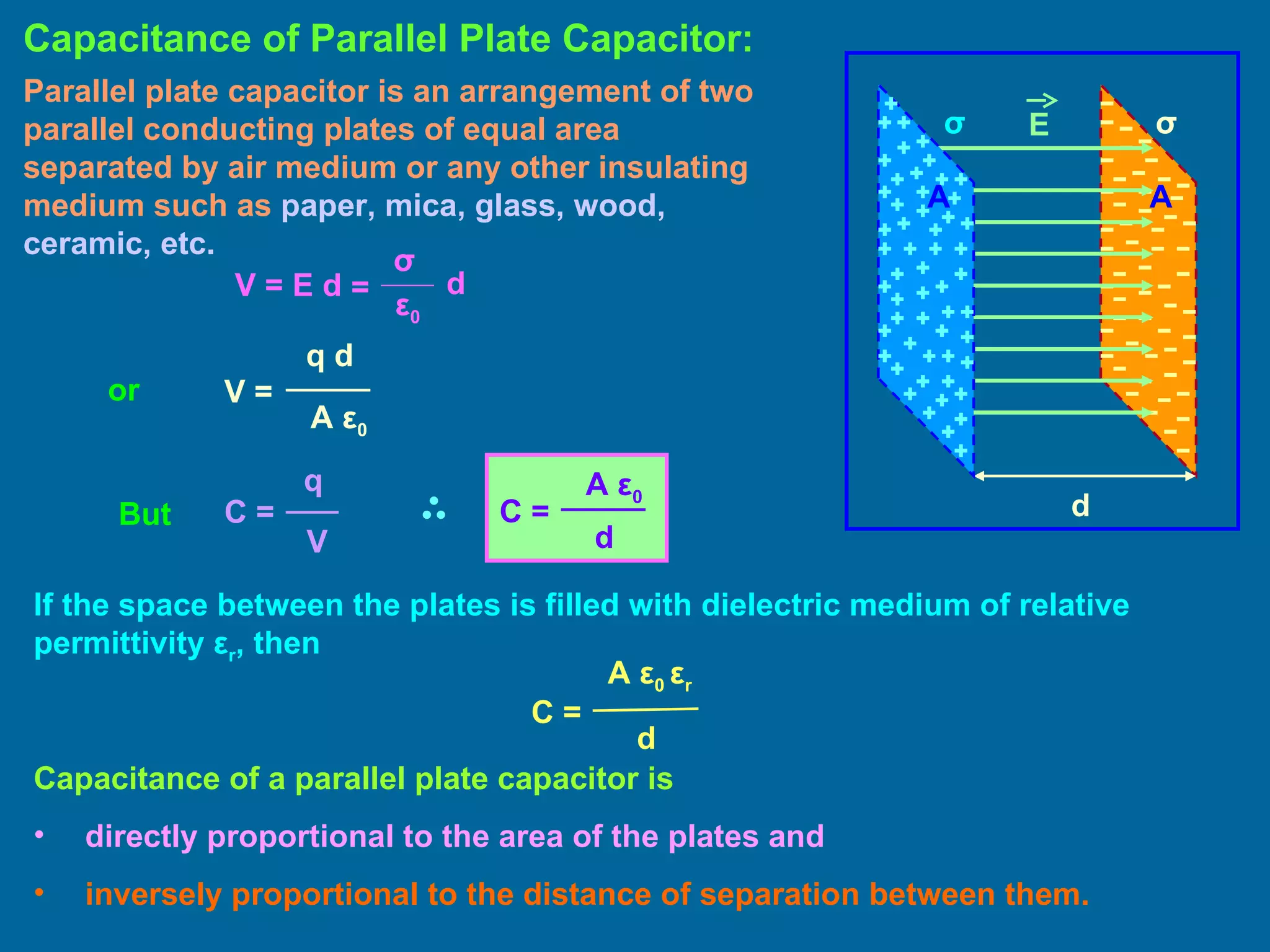
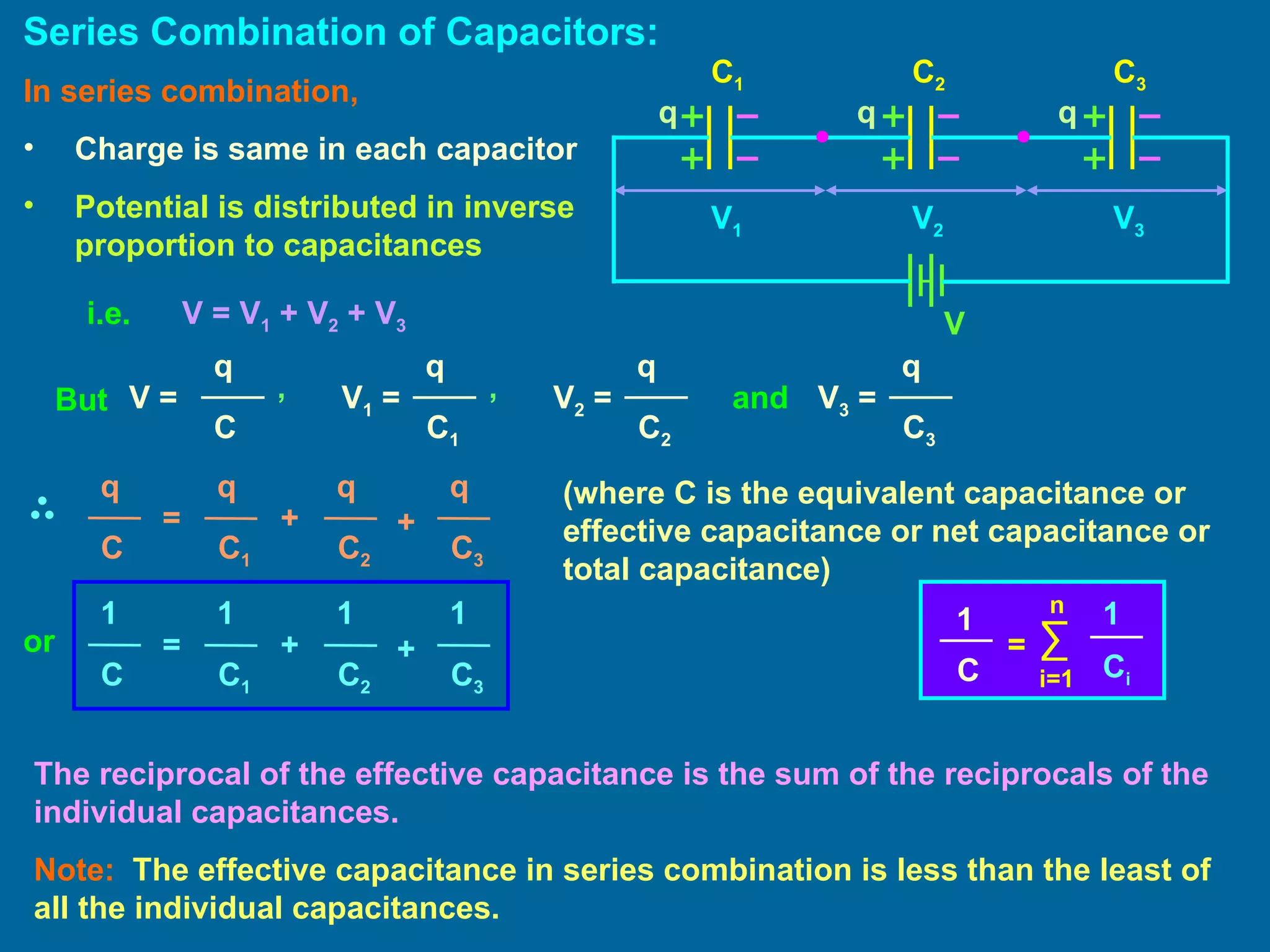
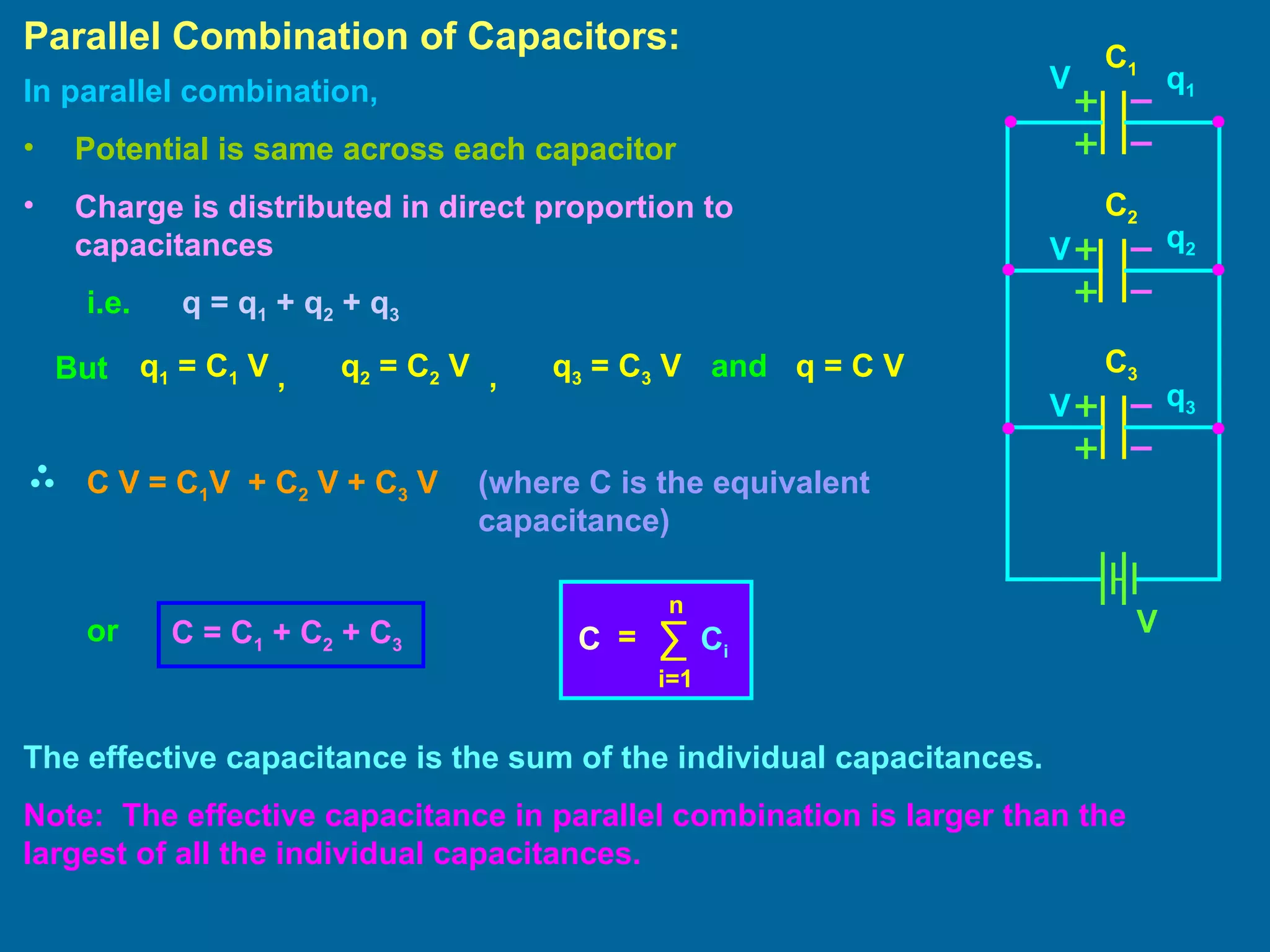

![Energy Density: V = E d and But or or SI unit of energy density is J m -3 . Energy density is generalised as energy per unit volume of the field. Energy Stored in a Series Combination of Capacitors: U = U 1 + U 2 + U 3 + ………. + U n The total energy stored in the system is the sum of energy stored in the individual capacitors. U = 1 2 C V 2 d C = A ε 0 U = 1 2 ε 0 Ad E 2 1 2 ε 0 E 2 = U Ad 1 2 ε 0 E 2 = U 1 = C 1 + C 2 1 + C 3 1 1 C + C n 1 ……… . + U = q 2 C 1 2 U = 1 2 q 2 1 [ C 1 + C 2 1 + C 3 1 + C n 1 ……… . + ]](https://image.slidesharecdn.com/electrostatics4-120302132444-phpapp02/75/Electrostatics-4-11-2048.jpg)
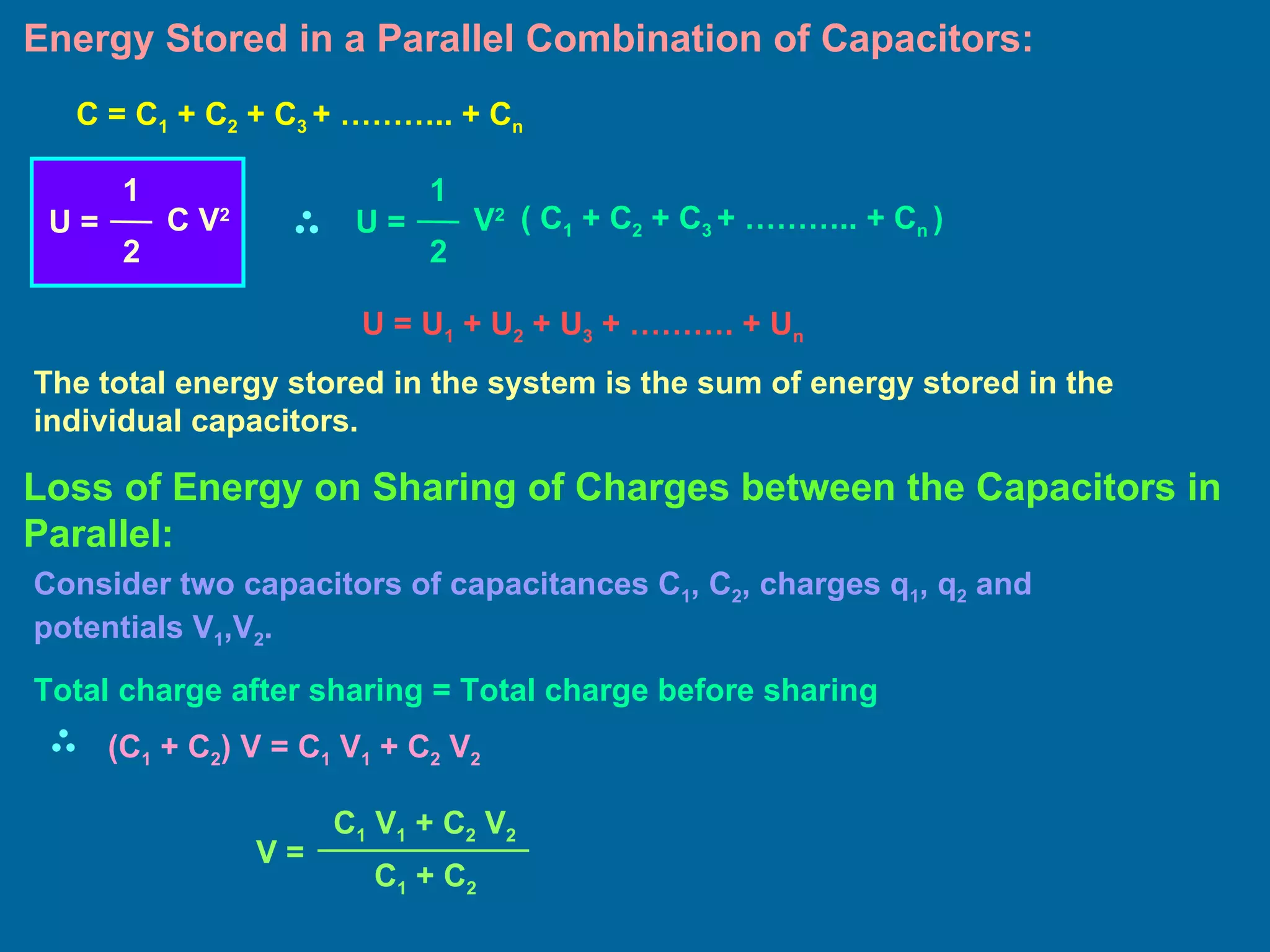
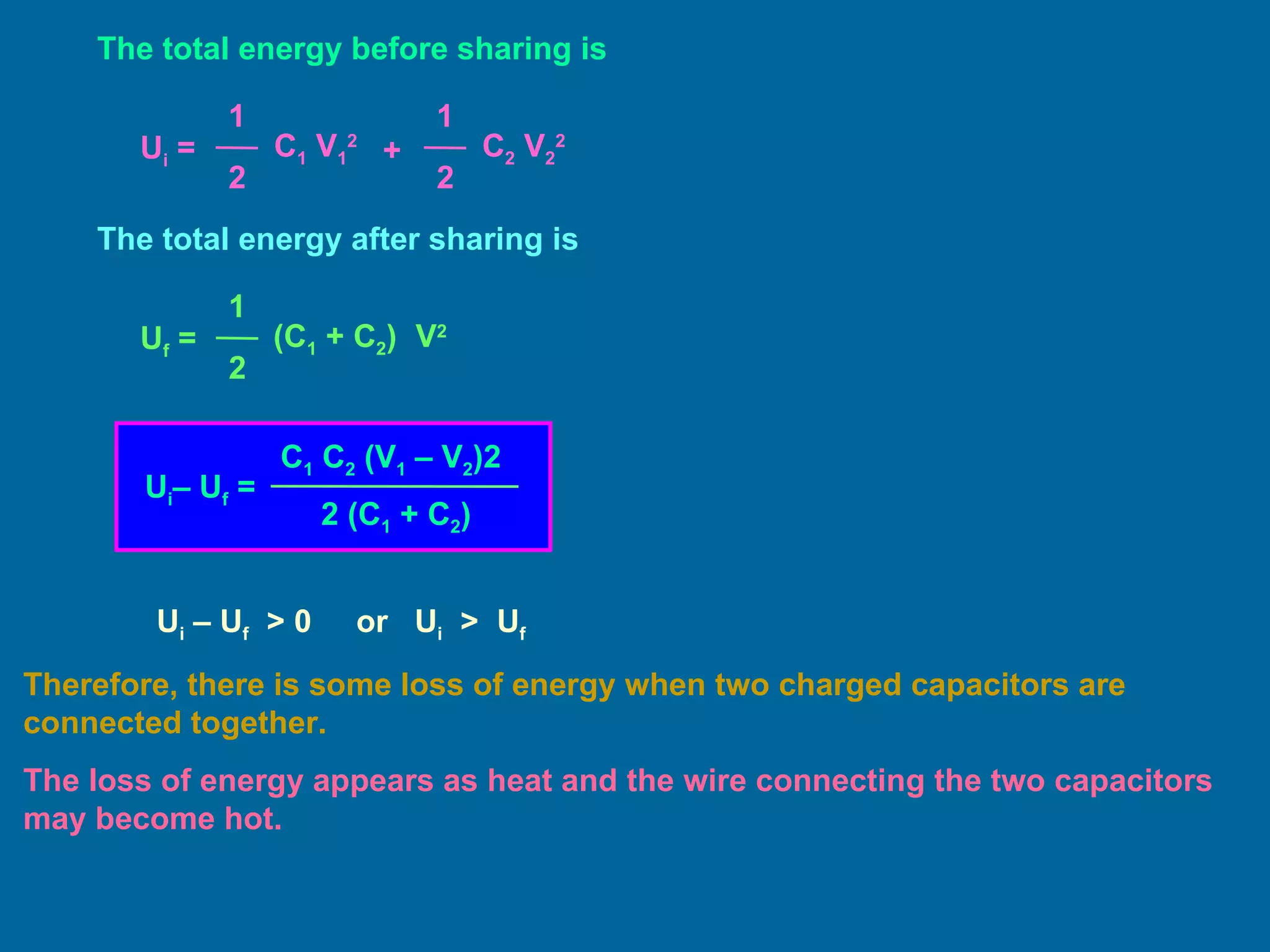


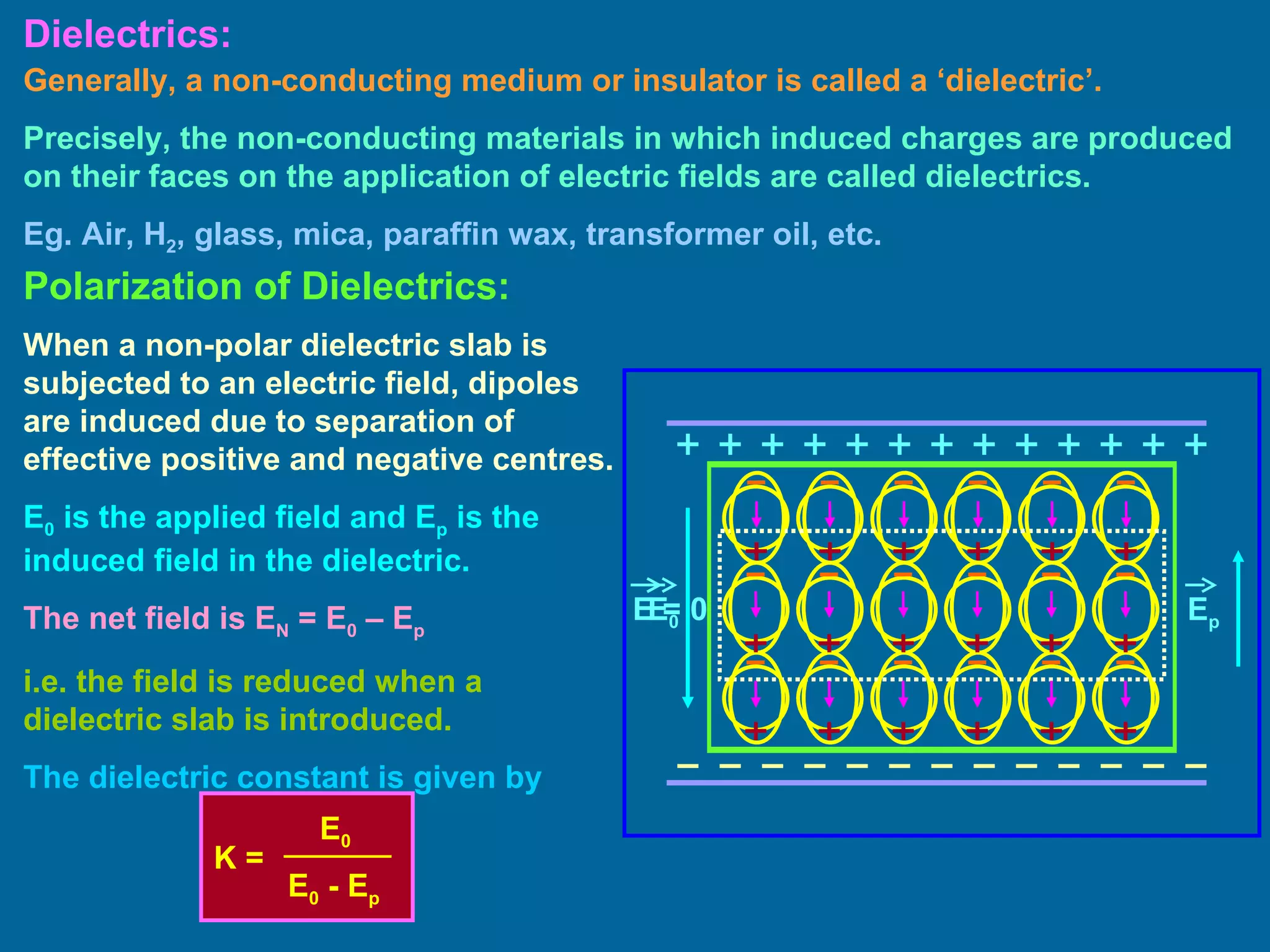
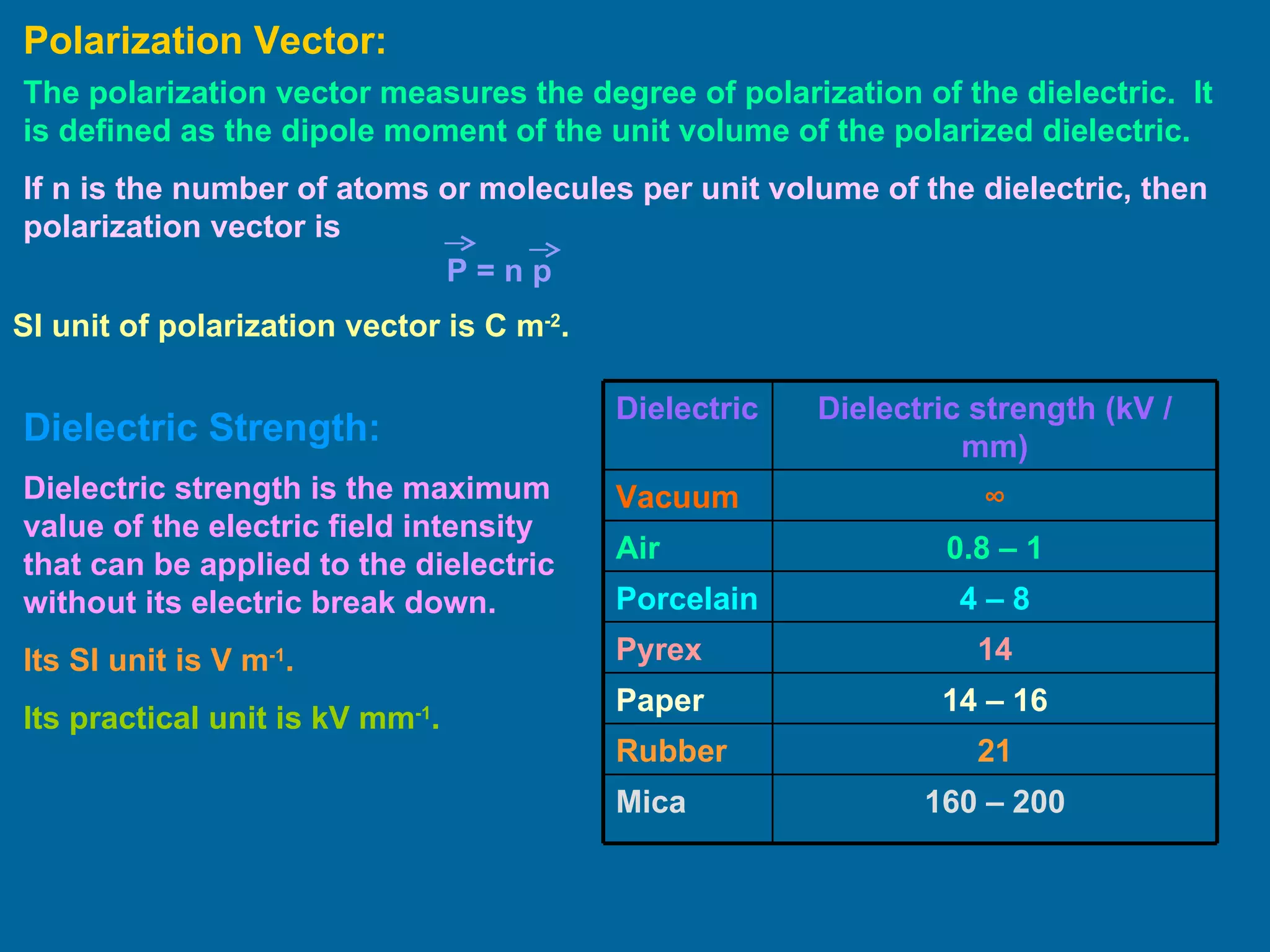
![Capacitance of Parallel Plate Capacitor with Dielectric Slab: E N = E 0 - E p V = E 0 (d – t) + E N t or But and or or C > C 0 . i.e. Capacitance increases with introduction of dielectric slab. E p E 0 d t E N K = E 0 E N = K E 0 V = E 0 (d – t) + K E 0 t V = E 0 [ (d – t) + K t ] E 0 = ε 0 σ = ε 0 q/A C = q V C = A ε 0 [ (d – t) + K t ] C = A ε 0 d [ 1 – K t ] d t ( 1 - ) C = C 0 [ 1 – K t ] d t ( 1 - )](https://image.slidesharecdn.com/electrostatics4-120302132444-phpapp02/75/Electrostatics-4-18-2048.jpg)

